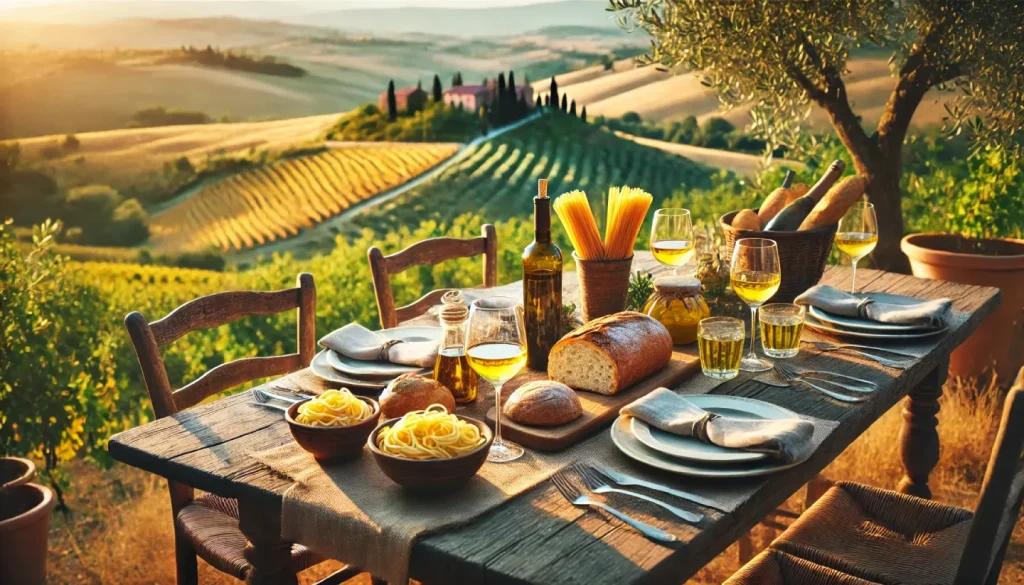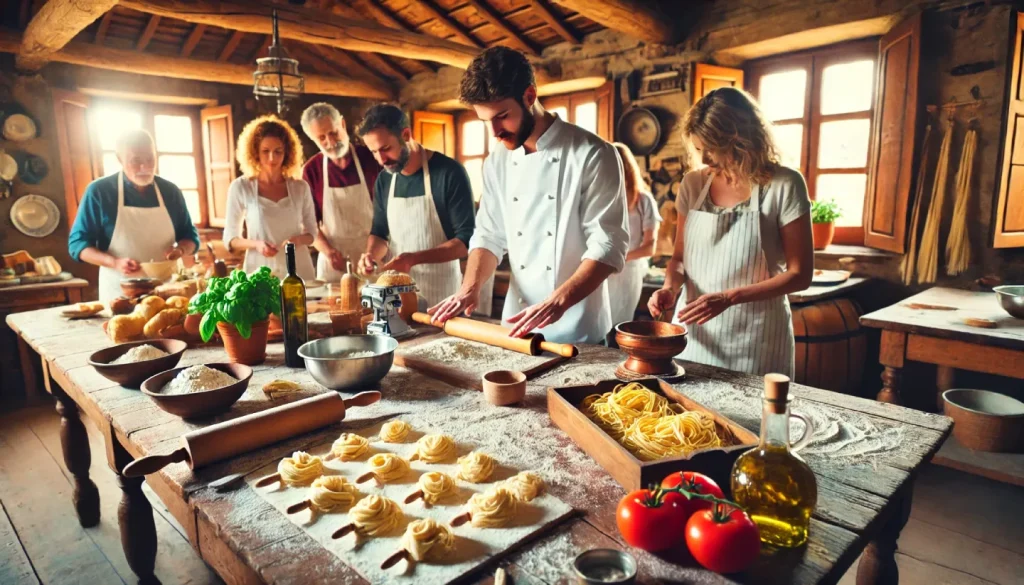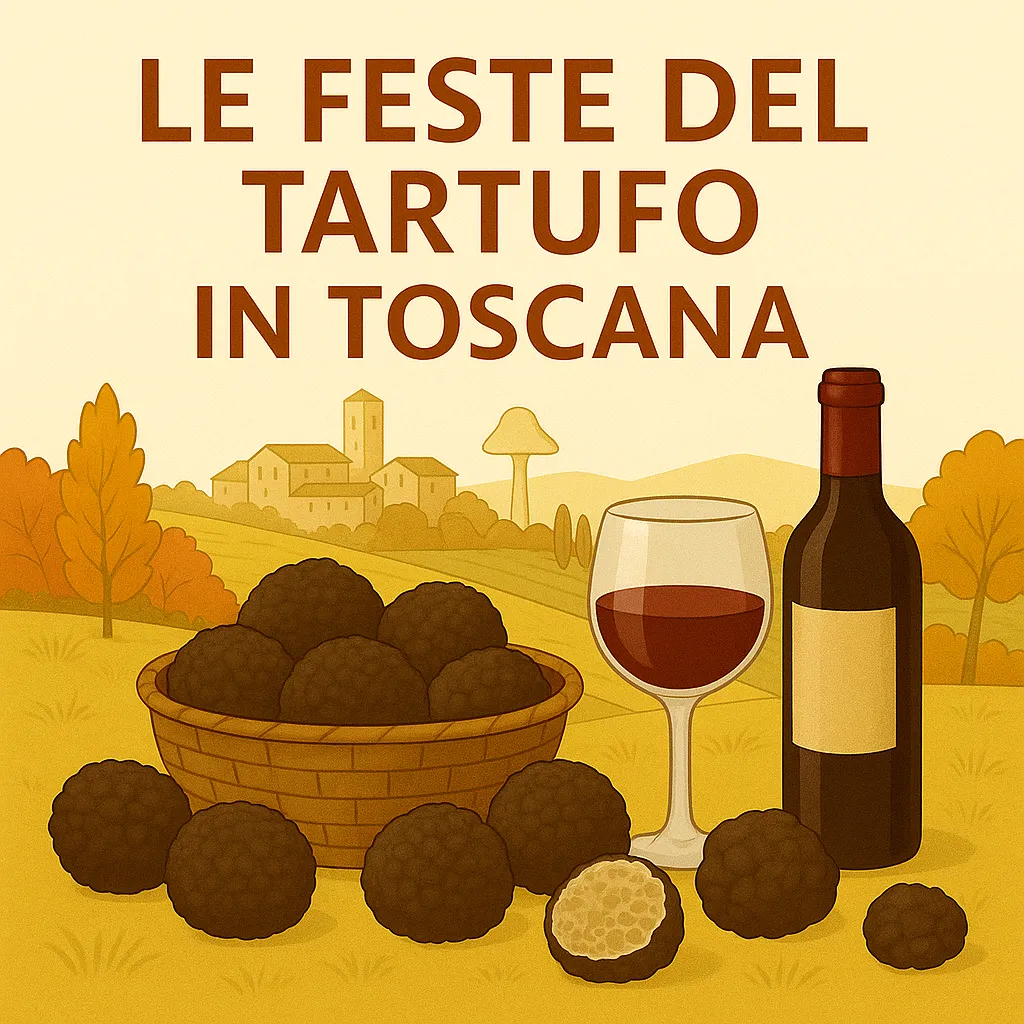Tuscan cuisine is synonymous with authenticity, simplicity and wholesome ingredients. During the summer, dishes are enriched with fresh, seasonal flavors, offering a unique culinary experience. If you want to immerse yourself in the culinary traditions of Tuscany and learn how to cook like a true Tuscan, taking a cooking class may be the perfect way to discover the secrets of your most beloved recipes.
The Fundamentals of Tuscan Cooking
Tuscan cuisine is based on a few but excellent ingredients, often linked to rural traditions. Key products include:
- Tuscan bread without salt, used for typical dishes such as pappa al pomodoro and panzanella.
- Extra virgin olive oil, Tuscany’s green gold, the star of every dish.
- Aromatic herbs, such as rosemary, sage, and thyme, which enhance the flavor of dishes.
- Tuscan wine, an unfailing accompaniment to every meal.
Tuscan Cooking Classes: What You’ll Learn
1. Tuscan appetizers
Tuscan appetizers enhance the simplicity and quality of local products.
- Tomato bruschetta: toasted bread with fresh tomatoes, garlic and basil.
- Tuscan crostini: with chicken livers, a typical recipe from the countryside.
- Panzanella: salad of stale bread with red onion, tomatoes and cucumber.
2. Traditional First Dishes
Homemade pasta is at the heart of Tuscan tradition.
- Pici all’aglione: thick handmade spaghetti with a tomato and garlic sauce.
- Pappa al pomodoro: a summer soup made with stale bread, tomato and basil.
- Ribollita: a dish more typical of winter, but perfect for understanding the philosophy of Tuscan cuisine.
3. Main Courses and Grilled Dishes.
The art of barbecuing is an essential part of Tuscan cooking.
- Fiorentina steak: cooked to perfection on the grill, served rare with salt and olive oil.
- Pork roast with rosemary: juicy meat flavored with local herbs.
- Cacciucco: a fish soup typical of the Livorno coast.
4. Tuscan Sweets
Tuscan desserts are often simple but with an unmistakable flavor.
- Cantucci and Vin Santo: almond cookies served with sweet wine for dipping.
- Grandma’s cake: tart with custard and pine nuts.
- Schiacciata con l’uva: seasonal dessert prepared with black grapes.

Tuscan Cooking Experiences: Where and How to Participate
Cooking classes in Tuscany take place in authentic locations, such as farmhouses, wineries and kitchens of local chefs. During the classes:
- Fresh, seasonal ingredients are used.
- Chefs teach traditional cooking techniques.
- Participants cook together and share the final meal.
Some of the best places for Tuscan cooking classes include:
- Chianti Classico: perfect for pairing cuisine with great Tuscan wines.
- Val d’Orcia: among historic villages and breathtaking landscapes.
- Florence and Siena: for a city cooking experience.
Why Attend a Tuscan Cooking Class
- Authentic experience: You learn from local chefs and cooks.
- Knowledge of ingredients: Learn the secrets of selecting quality products.
- Sustainable cooking: You use local products and learn traditional techniques.
- Fun and sharing: You cook together with other enthusiasts and taste the end result.
Conclusion
Taking a Tuscan cooking class means immersing yourself in the culture and flavors of the region. Whether you are a beginner or an expert, discovering the secrets of traditional cooking will allow you to bring a piece of Tuscany into your kitchen. If you want to have an authentic experience, Tuscany By GC organizes personalized cooking classes in the best locations in Tuscany. Contact us to book your culinary experience!



